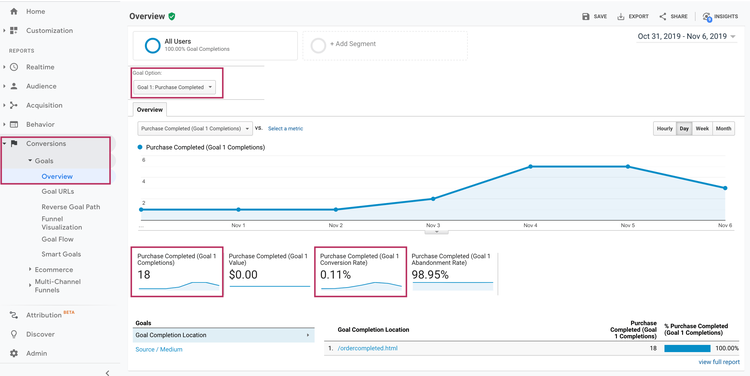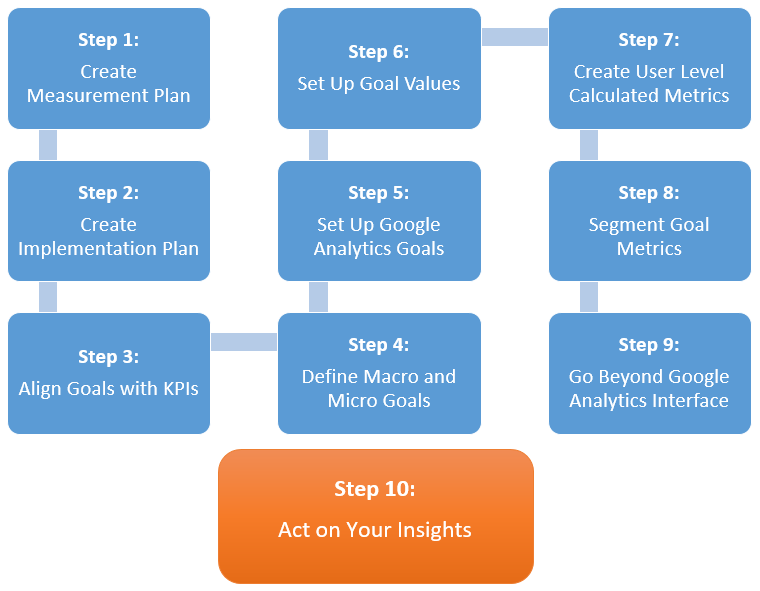What Data Is Google Analytics Goals Unable to Track and Why
What Data Is Google Analytics Goals Unable to Track and Why
Blog Article
Introducing the Blind Spots: Comprehending What Google Analytics Goals Can not Measure
In the world of electronic analytics, Google Analytics stands as a powerful tool for monitoring and analyzing on the internet user interactions. However, amidst its robust capabilities, there exist blind areas that usually evade dimension. Comprehending what Google Analytics goals can not measure is important for acquiring an extensive view of user behavior and involvement. As we dive right into the ins and outs of these blind areas, we discover a complex internet of undiscovered areas that hold beneficial understandings right into user actions and inspirations, difficult traditional wisdom and clarifying the limitations of our data-driven understanding.
User Habits on External Platforms
Recognizing just how customers communicate on exterior platforms is important for optimizing on the internet techniques. Exterior platforms, such as social media networks, reference sites, and on-line forums, play a substantial function in driving website traffic to a company's web site. By analyzing individual behavior on these systems, businesses can obtain valuable insights right into the effectiveness of their advertising initiatives and the preferences of their target market.
One trick aspect of user habits on exterior platforms is the recommendation resource. By tracking where the customers are coming from, businesses can determine which platforms are driving one of the most traffic to their web site. This details can help companies allocate their resources better, focusing on the platforms that produce the best results.

Offline Communications and conversions
Analyzing user behavior on exterior systems offers important insights into online strategies; however, considering offline conversions and interactions is equally crucial for a detailed understanding of a business's general performance. While Google Analytics excels at tracking online interactions, it drops brief in catching the complete customer trip that often consists of offline touchpoints. Offline conversions, such as in-store acquisitions or phone queries, play a significant duty in several services' success. Disregarding these communications can lead to a distorted sight of the performance of advertising campaigns and general service performance.

Acknowledgment Beyond Last Click
When diving right into the realm of digital marketing analytics, it becomes vital to look past the solitary touchpoint of the last click for a more comprehensive understanding of attribution. While Google Analytics gives valuable understandings right into user behavior, depending exclusively on last-click acknowledgment can be restricting - what data is google analytics goals unable to track. Acknowledgment models that surpass the last click provide a much more nuanced view of the consumer trip, thinking about all the touchpoints that cause a conversion
Attribution beyond the last click enables marketers to assign credit rating to numerous interactions along the conversion course, providing a clearer picture of the efficiency of various marketing channels. By discovering multi-touch attribution models such as direct, time decay, or position-based acknowledgment, organizations can much better designate their marketing budgets and enhance their approaches for optimal effect.
Comprehending the influence of each touchpoint in the conversion process is essential for making informed decisions and making best use of ROI. By accepting acknowledgment beyond the last click, businesses can gain deeper understandings right into customer habits and tailor their marketing initiatives a lot more efficiently.
Cross-Device and Cross-Browser Monitoring

Likewise, cross-browser monitoring complements cross-device monitoring by capturing user actions as they switch between various internet browsers. Comprehending just how individuals engage with sites on various internet browsers can help marketing professionals enhance their on the internet experiences to ensure consistency and performance throughout various systems.
Qualitative Information and Individual Intent
Comprehending individual intent with qualitative information evaluation is essential for creating targeted electronic advertising strategies that reverberate with the demands and preferences of the target market. Qualitative information supplies understandings right into the 'why' behind user activities, clarifying inspirations, emotions, and choices that measurable information alone can not record. By assessing customer responses, remarks, and communications, marketing experts can reveal valuable information regarding user intent, allowing them to tailor their messaging, web content, and offerings to better straighten with what their audience is seeking.
Qualitative data likewise aids in comprehending the context in which individuals engage with an internet site or app. This contextual understanding enables marketing professionals to create more pertinent and tailored experiences, inevitably driving higher engagement and conversion prices. By diving right into individual intent through qualitative information analysis, companies can obtain a deeper understanding of their target audience, go to the website leading to extra efficient advertising and marketing techniques that fulfill individuals' requirements and expectations.
Verdict
Finally, Google Analytics goals have constraints in determining customer behavior on exterior platforms, offline conversions, attribution past last click, cross-browser and cross-device monitoring, and qualitative data connected to customer intent. what data is google analytics goals unable to track. It is essential for businesses to be mindful of these blind areas in order to supplement their information analysis with other devices and techniques to get a more extensive understanding of their audience and enhance their overall digital web marketing approaches
By assessing user habits on these systems, organizations can obtain valuable understandings right into the efficiency of their marketing efforts and the choices of their target audience.
Analyzing individual actions on external platforms provides useful understandings right into on-line approaches; nevertheless, taking into consideration offline conversions and communications is just as imperative for a detailed understanding of a firm's total performance.In digital marketing analytics, relocating past last-click acknowledgment to explore cross-device and cross-browser monitoring is important for acquiring a holistic understanding of user communications throughout different systems and devices. By assessing user responses, comments, and communications, marketers can discover useful details regarding user intent, permitting them to customize their messaging, web content, and offerings to much better line up with what their target market is seeking.
By diving into user intent through qualitative data analysis, businesses can obtain a deeper understanding of their target audience, leading to more effective advertising and marketing approaches that meet users' assumptions and needs.
Report this page